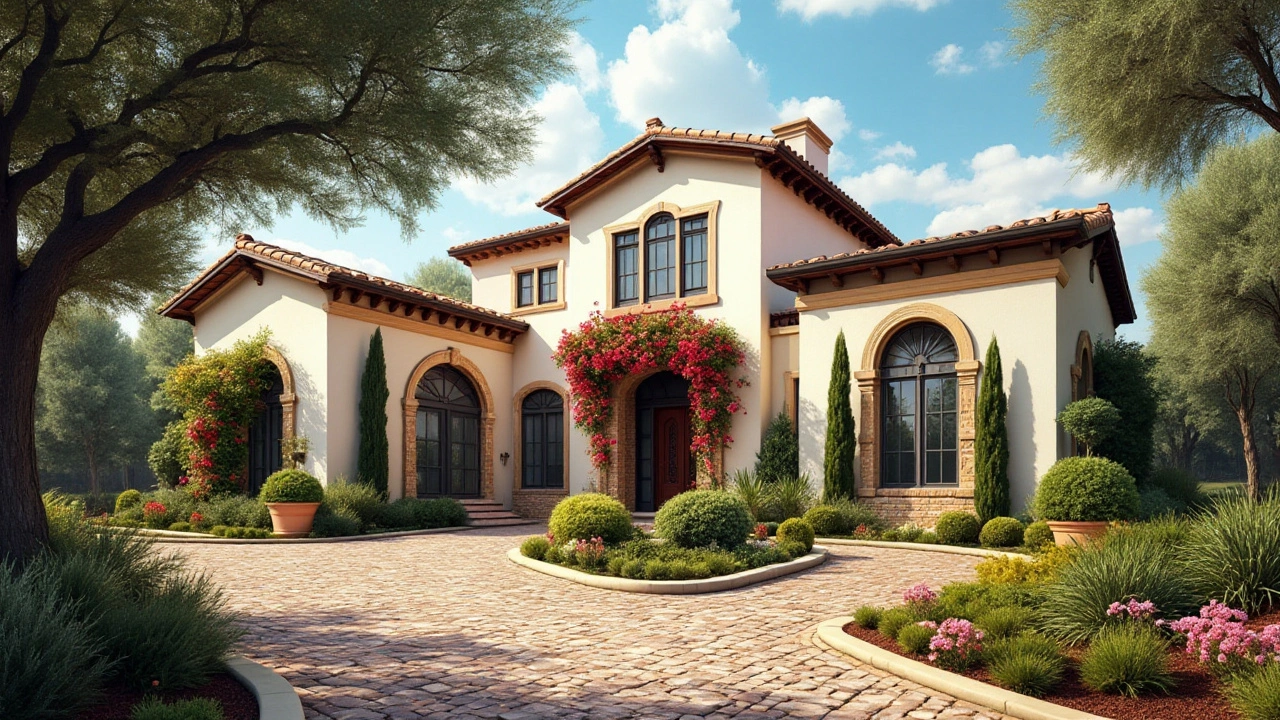Mediterranean Revival Architecture is an enchanting style that draws inspiration from the sun-drenched coasts of Spain, Italy, and Greece. Emerging in the late 19th and early 20th centuries, it brings a touch of Old World elegance through its characteristic terracotta roofs, arched windows, and stucco walls. This architectural approach captures the essence of beauty and harmony, making it a popular choice for homes in warm climates. Dive into the elements that define this captivating style and learn tips on incorporating its timeless allure into modern designs.
Mediterranean architecture: how the style works and how to use it today
Mediterranean architecture isn't just about pretty roofs and arched windows—it's a set of building choices shaped by heat, sun, and life outdoors. If you like cool interiors, shaded courtyards, and low-maintenance materials, this style gives clear, practical ideas you can use whether you live by the sea or want that relaxed look in the suburbs.
Key features to spot
Look for clay roof tiles, smooth stucco walls, arched doors and windows, and deep porches. Thick walls and small, shaded openings cut heat and glare. Inside, simple plaster, wooden beams, and terracotta or patterned tile floors keep rooms cool and easy to clean. You’ll also see iron railings, wooden shutters, and courtyards or loggias that blur indoor and outdoor living.
Styles vary across the Mediterranean basin—Spanish, Italian, Greek, North African, and Levantine traditions each add local patterns, colors, and materials. In the U.S., the Mediterranean Revival and Spanish Colonial homes borrow these elements but simplify them for modern living.
Why it works (and what to copy)
At its core, Mediterranean design solves climate problems: thick walls store coolness, white or pale exteriors reflect sunlight, and shaded patios let people live outside during hot afternoons. You can copy those ideas without rebuilding. Paint exterior walls a light color, add deep overhangs or pergolas, and use stone or tile flooring in high-traffic areas to keep things cool and durable.
Want the look but need modern comfort? Keep the classic roofline and add modern insulation under the tiles. Use double-glazed windows with deep exterior shades to keep the visual style while improving energy performance. Courtyards can be scaled down to small atriums or even a planted entry that brings light and airflow into the house.
For small budgets, focus on visible touches: swap plain shutters for wooden ones, replace cheap siding with textured stucco panels, or fit a decorative iron railing on a balcony. These moves give strong Mediterranean character without a full renovation.
Maintenance is straightforward: check and reseal grout in tile floors, repair stucco cracks early to prevent water damage, and treat ironwork with protective paint to avoid rust. Clay tiles last decades but need good underlayment and flashing to prevent leaks—budget for those when you retrofit a roof.
Landscaping completes the picture: drought-tolerant plants (lavender, rosemary, olive trees), gravel pathways, and terracotta pots keep the Mediterranean vibe while saving water. A small fountain or reflecting pool cools the air and adds a calm focal point for a courtyard or patio.
If you want more examples or renovation plans, check our Mediterranean Revival article for photos, layout ideas, and real homeowner tips. Use the core idea—shade, thick walls, and simple durable materials—and you’ll get the style and the comfort without overdoing it.

